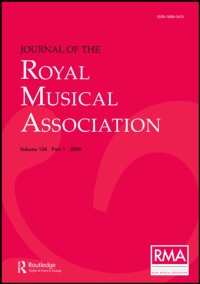No CrossRef data available.
Article contents
The Triune Element in Beethoven as Specially Exemplified in his Pianoforte Sonatas
Published online by Cambridge University Press: 01 January 2020
Extract
“Omne Trinum est perfectum.”–Old Latin adage.
Under the title of the “Triune Element in Beethoven” I propose to bring before your notice a certain feature of construction pervading his pianoforte sonatas. This feature consists in the occurrence three times in succession of a sentence or part of a sentence, or merely of a rhythm, figure, or some other fragment of a musical idea. The way in which I became conscious of it may not be without significance in estimating its true nature. Generally, a discovery of any peculiarity of musical construction is the result of analysis. But in this instance it was not so revealed. It came quite unsought. It merely dawned upon me as I played when my thoughts were far enough from anything pertaining to mere form. I mention this fact because it somewhat confirms mein my opinion that this three-fold repetition is not merely a matter of form, but of the essence of the thought, and further that it is not a mere characteristic of style, but an index of the mind. While this feature occurs so frequently in the pianoforte sonatas of Beethoven as to invest it with more or less significance, it is noticeable that it is only to be found to a very limited extent in the compositions of other great composers; and even where it does occur in them it rarely, and I think I may say never, possesses that logical force and that organic development that raise it in Beethoven's works from a dead form into a vital principle. This three-fold repetition would, therefore, appear in this higher sense as a characteristic peculiar to the great master.
Information
- Type
- Research Article
- Information
- Copyright
- Copyright © Royal Musical Association, 1896

